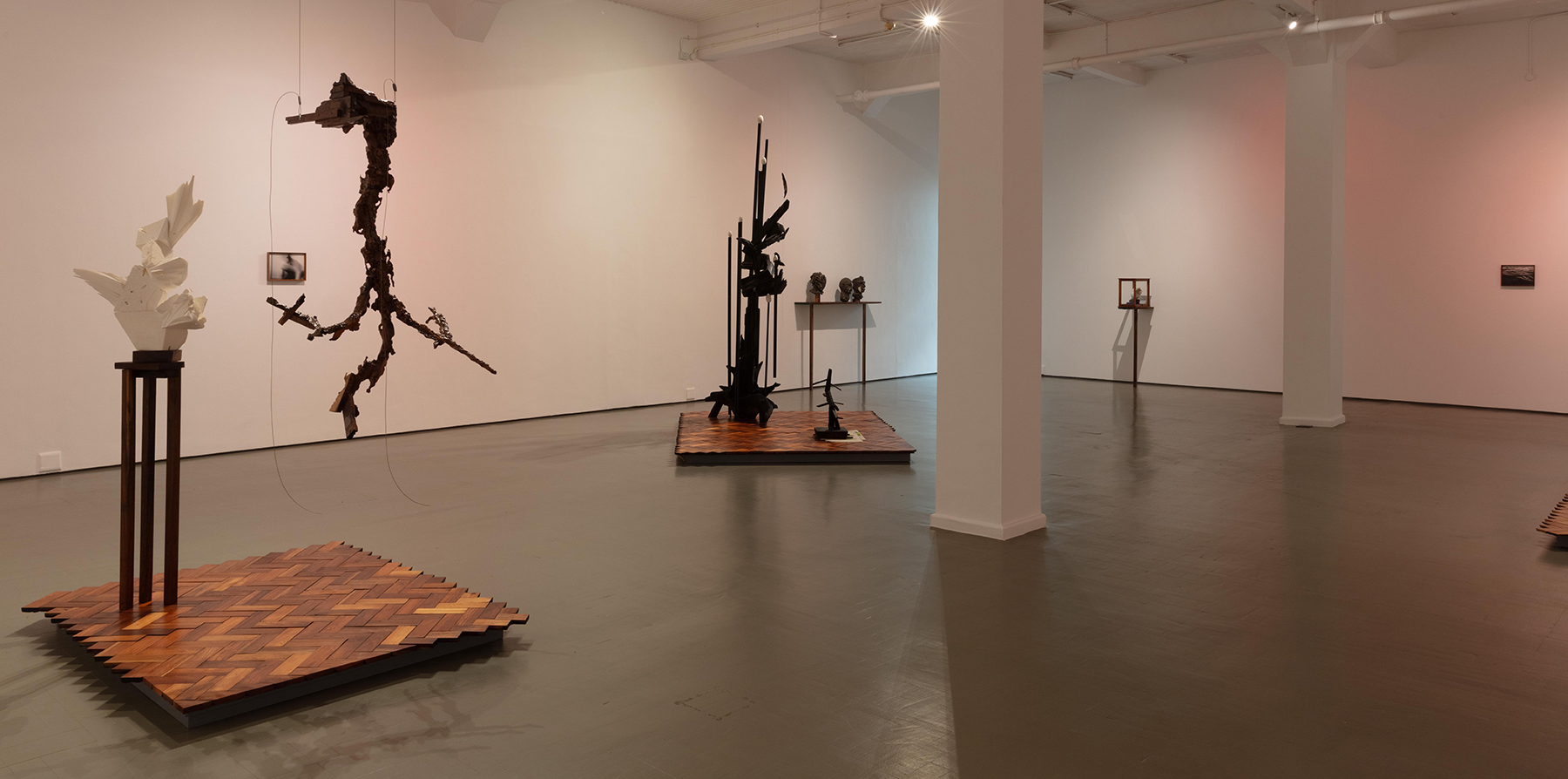Cape Town
16 March - 4 May 2024Wim Botha
An Astonishment of Heart

An astonishment of heart, 2024, installation view
STEVENSON is pleased to present An Astonishment of Heart by Wim Botha.
The artist’s 11th exhibition with the gallery, and his most personal to date, comprises sculptures, paintings, drawings and installation. Following threads rather than declaring an argument, the exhibition combines elements from Botha’s visual lexicon in unexpected ways.
Marble, maize meal and parquet flooring combine with oil, polystyrene, inks and silver prints across new works that range from the abstract and gestural to intricately detailed. Botha describes form as a unifying element in some works and colour in others. The saturated tones in An Astonishment of Heart are charged with a symbolism that draws on visualisations of life force in Eastern esoteric belief, as well the Japanese tradition of Kusōzu, which focuses on images of the decaying body. These colours become especially prominent in a series of busts for bronze, made in polystyrene. The ambiguous forms hint at alternate realities, suggesting that observable form is malleable, and relate allusively with states of being.
Taking its title from Kendrick Lamar’s song Fear, which quotes a verse from the book of Deuteronomy, this body of work flows from the artist’s sense of the uniqueness of the present. Where in the original context, 'astonishment of heart' is set alongside madness and blindness as part of a litany of punishments for serving the wrong god, in Botha's reading it seems an innocent and pure state, an awakening to the wonders still available to be received, despite a complex milieu of oppression, violence and complicity. Botha continues:
What emerges is essentially a self-portrait of my grappling with artmaking and the place of the creative impulse in a time of conflict and moral outrage. The art object is unique in that it can hold different opposing realities at once, and speaks to the idea of relativistic consequence, for instance, the Laocoön’s message around doing the right thing but being destroyed by the gods of the other side.
The installation that introduces this exhibition, The Resurrection Tree, takes its form from contemplation objects, and here it is set on broken ground to extend the artist’s discussion of erosion, time and cycles. Referencing scholars’ rocks and other objects of beauty made by natural processes, he continues:
These kind of objects gain their value from coming into being untouched by human hands. Making these by hand undermines the idea of the contemplative object made by nature, but at the same time, the act of making also reflects an aspiration towards a kind of sublime, a sense of wonder and ecstasy.
A central installation, Minor Deity (Benevolent), combines disrupted, floating, gilt-framed paintings in an environment surrounding a dark, scorched and gold-leafed figure. Of indeterminate nature and intention, the calm figure is dotted by marble eggs, and sees through marble eyes, with a fragment of a bird’s wing, covered in ultramarine pigment like the tip of a paint brush, hanging in its orbit.
This tension between fertility and decay is taken further in a watercolour painting depicting a pitcher plant. Carnivorous and botanic, with a form both phallic and yonic, Botha introduces this motif to mark a new chapter in his longstanding dissection of the parallels between collapse and regeneration.
Botha exhibits concurrently with Farhana Jacobs. The exhibition opens Saturday 16 March, 10am to 1pm.
Wim Botha will give a talk on An Astonishment of Heart on Saturday 6 April at 11am. On Saturday 20 April at 10.30 for 11am Sana will offer a sound bath with traditional Tibetan singing bowls in the exhibition space as part of our SOUND series.

